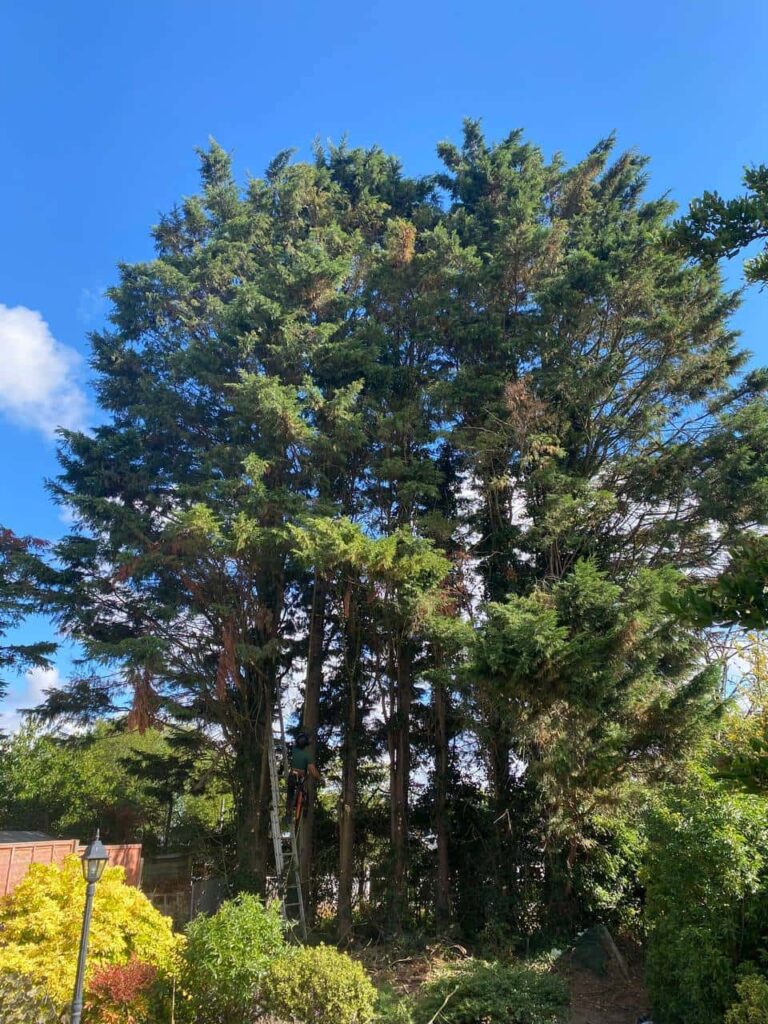In the face of increasingly unpredictable weather patterns, protecting property from storm damage has become a key concern for homeowners and business owners alike. One area that often goes overlooked in storm preparation is tree maintenance. At Ely Tree Surgeons, we provide expert tree surgery services in Ely, Cambridge, helping property owners ensure that their trees are prepared to withstand the impact of severe weather. Here’s why regular tree surgery is essential for storm damage prevention and how it can help safeguard your property.
The Impact of Storms on Trees
Storms can be extremely harsh on trees, with strong winds, heavy rain, and even hail causing substantial damage. The structure and health of a tree determine how well it can withstand these conditions. A neglected tree, or one with structural weaknesses, becomes a hazard in stormy weather, increasing the risk of branches or even the entire tree falling. By undertaking routine tree surgery, you can address these issues proactively, reducing the likelihood of storm damage.
Key Reasons Tree Surgery Helps in Storm Damage Prevention
- Eliminating Weak Branches and Deadwood
One of the primary tasks in tree surgery is the removal of deadwood and weak branches. Deadwood can fall unexpectedly, while weak branches are more susceptible to breaking off in high winds.
- Hazard reduction: Removing weak or dead branches prevents them from falling during storms, which could otherwise damage nearby structures, vehicles, or even passers-by.
- Improved stability: Removing unhealthy limbs helps balance the weight of the tree, improving overall stability and allowing it to withstand heavy winds and rain more effectively.
- Reducing Wind Resistance Through Crown Thinning
Crown thinning is a technique used in tree surgery that involves selectively removing some of the branches within the crown. This reduces the density of the foliage and allows wind to pass through more easily, decreasing the risk of the tree being uprooted.
- Lower wind resistance: By thinning out the canopy, the tree is less likely to catch the full force of the wind, reducing the risk of breakage or complete failure.
- Health benefits: Crown thinning also promotes healthier growth by allowing more sunlight and air to reach the inner branches, reducing the risk of disease.
- Improving Structural Integrity with Crown Reduction
In cases where a tree’s height or spread poses a risk, crown reduction is often recommended. Crown reduction involves pruning the outer branches to reduce the overall size and weight of the canopy.
- Enhanced stability: By reducing the size of the canopy, the tree becomes less top-heavy, decreasing the risk of it toppling over in strong winds.
- Controlled growth: Crown reduction ensures the tree grows in a controlled, balanced manner, preventing weak or elongated branches from extending too far and posing a threat to nearby structures.
- Addressing Root Issues Through Tree Surgery
A tree’s root system is essential for its stability, particularly in stormy conditions. However, roots can become damaged due to poor soil conditions, compaction, or diseases. Tree surgery can help address these issues to ensure the roots provide adequate support.
- Root inspection and care: During a tree surgery assessment, arborists can identify root issues and take measures to improve root health, such as soil aeration or fertilisation, which strengthens the tree’s overall foundation.
- Reduction of root-related risks: By ensuring a healthy and stable root system, tree surgery can help prevent the tree from toppling over, especially in waterlogged soil during heavy rains.
- Preventing Disease Spread That Can Weaken Trees
Diseased trees are particularly vulnerable to storm damage, as their weakened structures are less capable of withstanding severe weather. Regular tree surgery includes inspections for diseases or pest infestations that could compromise the tree’s health.
- Early intervention: Detecting and addressing disease early prevents it from spreading throughout the tree or to nearby trees, ensuring that trees remain robust and resilient.
- Enhanced longevity: Regular treatments keep trees healthy and better able to endure storms without succumbing to damage, preserving their place in the landscape for years to come.
The Long-Term Benefits of Preventative Tree Surgery
Routine tree surgery not only helps protect your property during storms but also provides long-term benefits for your trees and landscape. Healthier trees mean a more attractive property, improved air quality, and a stable ecosystem. Preventative care also reduces the need for emergency tree removal and costly repairs due to unexpected storm damage.
Conclusion
Tree surgery is a vital step in storm damage prevention, reducing the risks posed by weakened or improperly maintained trees. By investing in regular tree care, you can strengthen your trees’ resilience against severe weather, protecting your property and enhancing the beauty of your landscape.
At Ely Tree Surgeons, we specialise in tree surgery services designed to keep your trees healthy, stable, and prepared for whatever the weather may bring. If you’re in Ely, Cambridge, and want to safeguard your property from storm damage, contact us today for a professional consultation. Let us help you maintain your trees in peak condition, ensuring your landscape remains safe and visually appealing throughout the year.
Call us on: 01353 880 893
Click here to find out more about Ely Tree Surgeons
Click here to complete our contact form and see how we can help with your tree needs.

